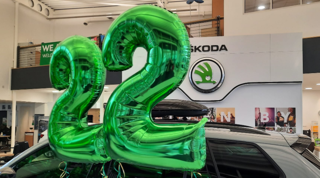Tomorrow the new 16-plate launches and if previous year’s figures are anything to go by, the level of consumer interest in buying new cars will increase.
Even though the new car market had a record year in 2015, new car sales in March and September accounted for 36% of the year’s final total.
March was not only the highest performing month, registering 492,774 new cars, it holds the record for most cars sold in a month, so March 2016 could be a good indicator to whether the industry strengthens on 2015 successes.
Whilst this increase in new car demand may be due to attractive finance packages, or cheaper running costs, it’s undeniable that the industry is changing.
The wealth of information available online is creating a new type of car-buyer – one that’s able to use independent research to make better, informed decisions and arrive in the dealership having a clear idea about what it is they’re looking for.
Capturing the greatest market share of consumers means targeting them earlier in the buying process when they are researching their next purchase.
This means adding value to the process, and helping to make the transition from online to the forecourt seamless, in a way that is not intrusive.
Dealers can get ahead of the curve by identifying those customers that have done their research, read online car reviews and found quotes to make an informed decision.
These customers are, after all, either ready to buy based on the research they’ve done, or are nearly there.
Whilst no sale is guaranteed, those that have already seen a price they like for a car they’re interested in, are far more qualified and easier to convert.
Identifying those that are at this stage of the process will prove efficient for dealers, as more time and effort can be spent nurturing those ‘walk-ins’ that aren’t in a position to spend straight away.
Knowing what research, if any, has been completed before a customer walks in to the dealership will determine the type of conversation required, and if dealers have influence over the early stage of the buying process, the time it takes to convert the sale will be much less.
Yet, the biggest challenge is identifying which customers have completed their research and what their expectations are.
Platforms such as CarKeys.co.uk exist to identify what a consumer is looking for, and based on quotes provided by dealers, create a profile of an informed customer who is ready to buy, which can then be sent to the dealer.
Dealers are then able to use this information to complete the sale, which, running alongside those walking in to start the process, is a recipe for success in a month where interest is high, and time is short.
As is the case with multiple other industries, the transition to consumers researching online will strengthen the industry and keep confidence levels high.
The power of social media and YouTube, used as a tool to show new launches or create interactive car reviews, will only encourage consumers to buy new cars more often than they would have done before.
This online presence of consumers engaging with car brands and registering interest will continue to drive new innovative and intelligent opportunities for dealers, creating valuable data in the process.
This insight can be used in more effective ways to allow dealers to gain a better understanding of their customer, what their lifestyle is like, and ultimately what car would be most suitable for their needs, creating a better selling environment, instigating better relationships, and ultimately increasing sales.
With the busiest month just around the corner, digitally aware dealers will have a head start this month, and ensure that March 2016 continues the trend of previous years, and records more sales than ever before.
Author: Chris Smith, head at CarKeys.co.uk


















Login to comment
Comments
No comments have been made yet.